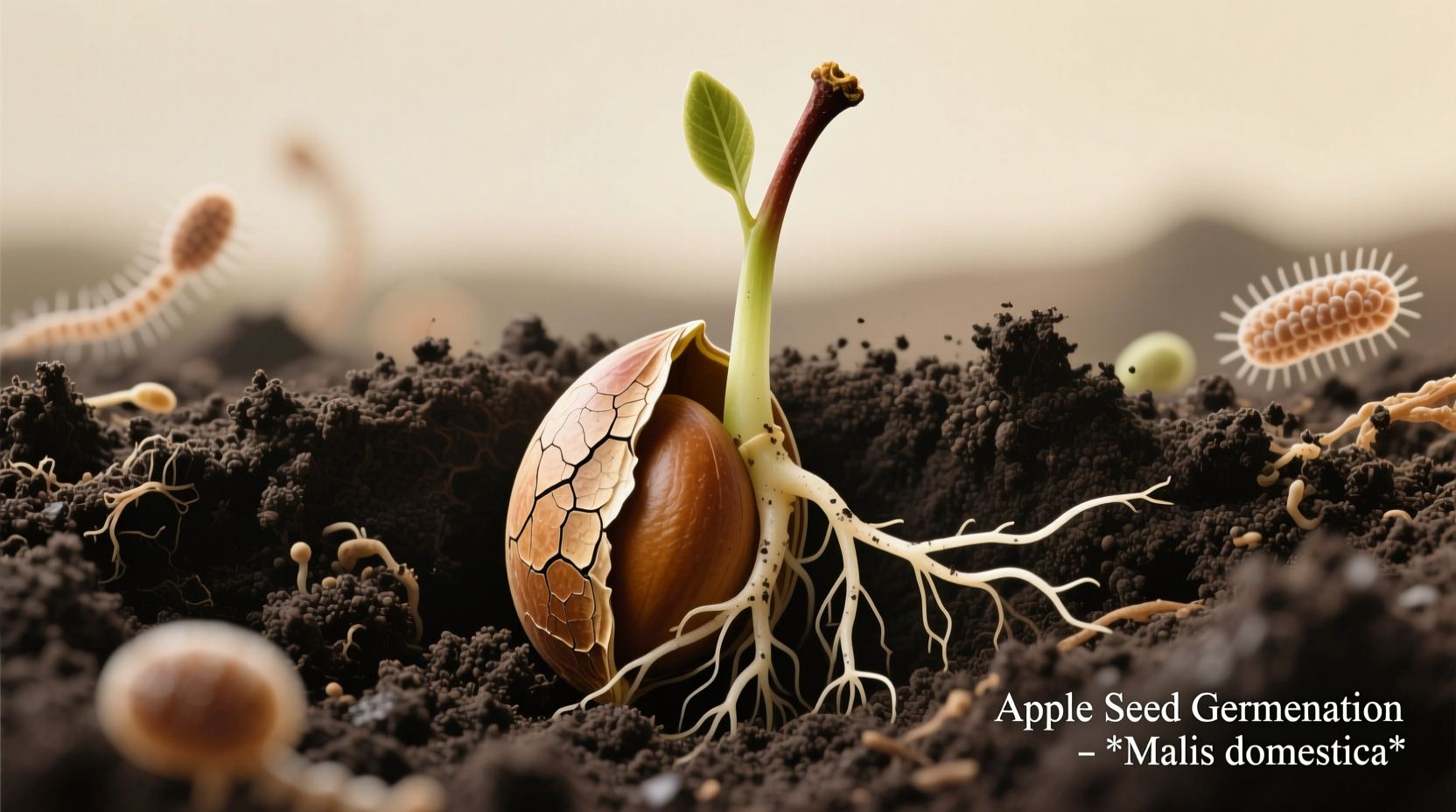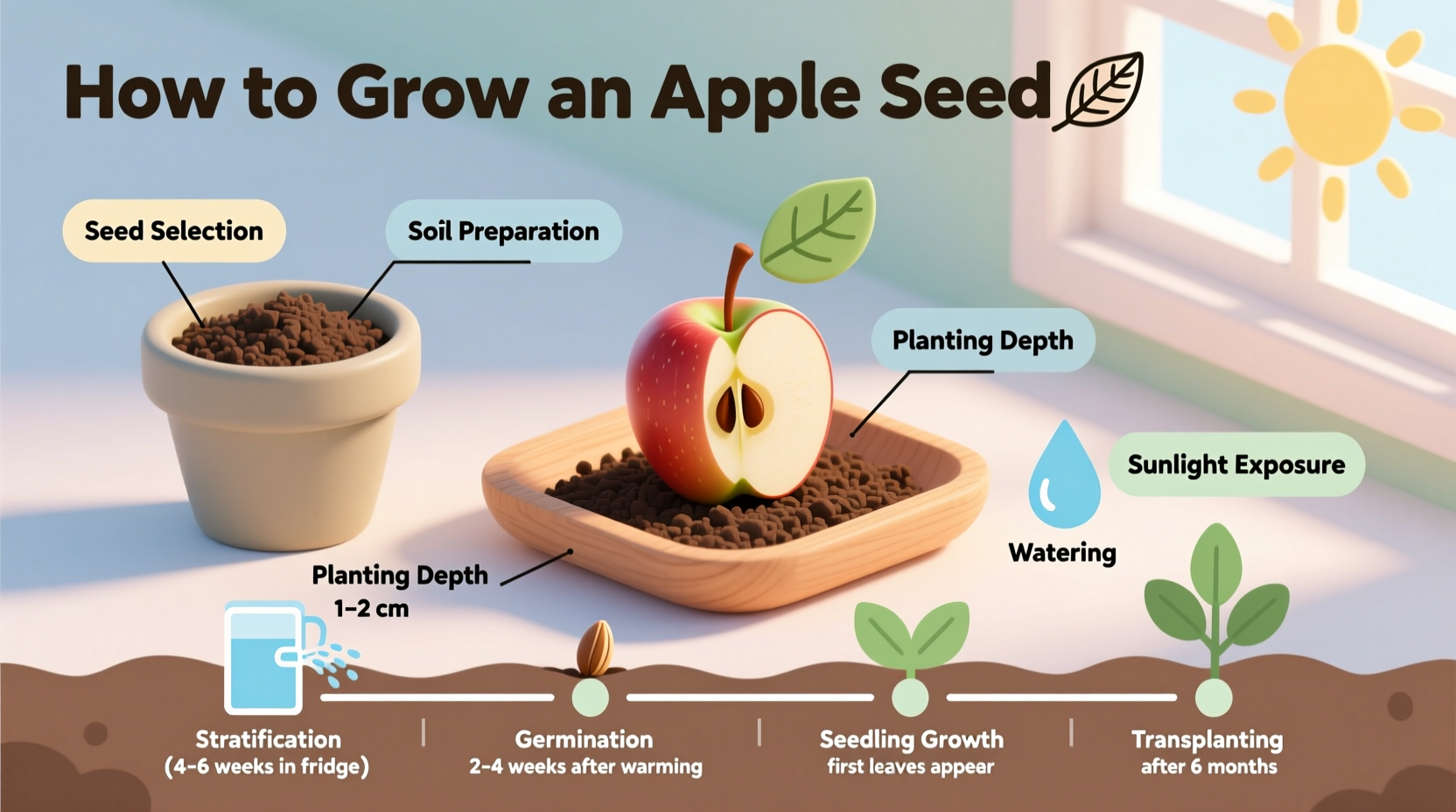Why Growing Apples from Seed Is Different Than You Think
Many home gardeners dream of growing an apple tree from the seeds of their favorite grocery store apple. While possible, this process comes with important realities most beginners don't anticipate. Unlike many fruits, apples don't "come true" from seed. This means the tree grown from a Honeycrisp apple seed won't produce Honeycrisp apples—it creates a genetically unique tree with unpredictable fruit characteristics.
The science behind this lies in apple genetics. Apples are extreme heterozygotes, requiring cross-pollination between different varieties. Each seed contains a unique genetic combination from both parent trees. This genetic diversity helped wild apples adapt but frustrates gardeners seeking identical fruit.

Your Apple Seed Growing Timeline: What to Expect
Understanding the extended timeline prevents disappointment. Here's what actually happens when growing from seed:
| Stage | Timeline | Key Requirements |
|---|---|---|
| Seed collection & cleaning | September-October | Fresh seeds from ripe apples |
| Cold stratification | 60-90 days at 34-40°F | Moist medium in refrigerator |
| Germination | Spring (after stratification) | Warmth, moisture, light |
| Seedling growth | 1-3 years | Protection from elements |
| First flowering | 5-8 years | Mature root system |
| First fruit | 7-10 years | Patience and proper care |
When Growing from Seed Makes Sense
Despite the challenges, growing apples from seed serves specific purposes:
- Creating rootstock for grafting known varieties (most common commercial use)
- Plant breeding programs seeking new apple characteristics
- Educational projects teaching plant genetics and life cycles
- Ornamental trees where fruit quality isn't the priority
For reliable fruit production matching a specific variety, grafting remains the only practical method. The USDA Agricultural Research Service confirms that over 99% of commercial apple trees use grafted rootstock to ensure consistent fruit quality and disease resistance.
Step-by-Step: Growing Apple Seeds Successfully
Step 1: Selecting and Preparing Seeds
Choose seeds from locally grown, disease-free apples rather than grocery store varieties bred for shipping. Grocery store apples often come from climates unsuited to your region. Rinse seeds thoroughly to remove germination-inhibiting sugars, then air-dry for 24 hours.
Step 2: Cold Stratification Process
Apple seeds require winter-like conditions to break dormancy:
- Mix seeds with equal parts moist peat moss or vermiculite
- Place in labeled plastic bag with small ventilation holes
- Store in refrigerator (34-40°F) for 60-90 days
- Check weekly for mold or premature sprouting
Step 3: Planting Germinated Seeds
Once roots emerge (typically 1/4 inch long):
- Plant vertically with root down in 4-inch pots
- Use well-draining potting mix (2 parts soil, 1 part perlite)
- Position seed just below soil surface
- Maintain consistent moisture (not soggy)
- Provide 12-16 hours of light daily
Step 4: First-Year Seedling Care
Young apple seedlings need protection:
- Keep in sheltered location for first growing season
- Fertilize monthly with balanced 10-10-10 formula
- Water when top inch of soil dries
- Gradually acclimate to full sun over 2-3 weeks
- Protect from freezing temperatures in winter
Troubleshooting Common Problems
Seeds won't germinate? Most likely insufficient cold period. Extend stratification by 30 days. Seeds from certain varieties like McIntosh require longer chilling.
Seedlings leggy and weak? Increase light exposure. Apple seedlings need 1,500-2,500 foot-candles of light for robust growth. Consider supplemental grow lights.
Mold on seeds during stratification? Replace moist medium and ensure proper ventilation. A drop of hydrogen peroxide in the medium prevents fungal growth.
Making the Grafting Decision
After 1-2 years, decide whether to keep your seedling:
- Keep growing if you're breeding or want rootstock
- Graft known variety onto your seedling rootstock after 1 year
- Abandon if seedling shows disease susceptibility
Successful grafting requires matching cambium layers between scion and rootstock. The University of Minnesota Extension recommends late winter grafting when both plants are dormant but temperatures stay above freezing.











 浙公网安备
33010002000092号
浙公网安备
33010002000092号 浙B2-20120091-4
浙B2-20120091-4